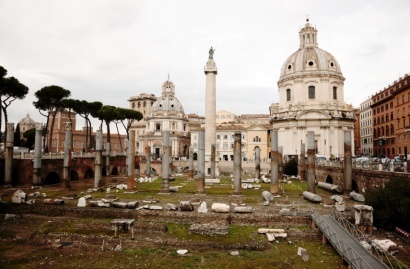Definition of Roman Republic
Miscellanea / / July 04, 2021
By Javier Navarro, in Nov. 2015
 The last Roman monarch was Lucius Tarquinio, nicknamed the Proud, who in turn was the last king of the Etruscans. From then on a new system of government, the Republic, which was in force from the 5th to the 1st century BC. C.
The last Roman monarch was Lucius Tarquinio, nicknamed the Proud, who in turn was the last king of the Etruscans. From then on a new system of government, the Republic, which was in force from the 5th to the 1st century BC. C.
Institutions of the Republic
In the Roman Republic (a term that comes from the Latin res publica, which we could translate as the public) the power It was held by two consuls, who had a mandate limited to one year and each controlled the performance of the other. On the other hand, institutions Government or magistracies were also double and limited in time (there were councilors, censors and quaestors as main magistrates). This system had one purpose: to limit the exercise of power to avoid abuses or despotic attitudes.
Along with the temporary public offices there was a institution, the Senate. The Senate consisted of a Assembly formed by aristocrats with large agricultural properties. In this way, a large part of the population he was outside the circles of power. This situation caused a constant confrontation between two sectors: the
aristocracy of the Senate (the patricians) and those who were part of the people (the commoners). One of the episodes of confrontation between patricians and commoners led to a new institution at the beginning of the republican period, the Tribunado de la Plebe. This institution was made up of magistrates, the tribunes, who were not part of the aristocracy but came from the popular classes.Historical evolution of the Republic
In the first stage of the Republic, the Romans face their Etruscan neighbors, which causes a weakening of the power of Rome. This circumstance was taken advantage of by another people, the Latins of Lazio, who attack Rome on successive occasions. At the same time, the Roman patricians and commoners face in a series of civil confrontations. When arriving the century IV a. C the Gauls, who came from beyond the Alps, crossed the Tiber river and reached Rome and imposed the payment of humiliating tributes to the Romans. However, this did not mean the disappearance of the institutions of Rome.
A key event in the history of the Republic was the abolition of the slavery for debts through the enactment of the Law Lucio Sextilia. This law meant a greater social rapprochement between patricians and commoners. This situation creates a renewed union of the Romans, which translates into a series of military episodes against the enemies of Rome: the wars against the Samnites who inhabit the south of the Italian peninsula and the wars against the Etruscans and Gauls who occupy the North. Finally the Romans manage to dominate the entire Italian peninsula. Later, the Roman legions faced the Carthaginians of North Africa in the famous Punic wars of the third and second centuries BC. C. Despite the initial victories of the Carthaginians, the Roman legions led by Scipio succeeded defeat the Carthaginians at the Battle of Zama in 202 BC, a town very close to the city of Carthage. In this way, the Roman Republic managed to destroy its greatest enemy, Carthage, and become the dominator of the western Mediterranean.
In the middle of the 11th century BC. C the Romans decide to expand their power and turn their attention to the Greek-dominated eastern Mediterranean. Thus, the Romans militarily occupied the Greek world and a part of Asia. His military victories greatly enriched Rome in the first stage, but her military hegemony throughout the Mediterranean implied a high economic cost. At the same time, the commoners are gradually gaining more power in the republican institutions, a circumstance that causes instability between patricians and commoners. At the same time, Rome has to face another internal enemy, the slaves (there were several revolts, the most famous being the one led by Spartacus).
In the middle of the 1st century BC. C General Julius Caesar manages to conquer Gaul and part of present-day Great Britain. The power of the Republic is afraid that Julius Caesar will become a dictator and this causes a war civil between the troops of Julius Caesar and the Roman Senate. The general is victorious and this completely changes the political landscape of Rome, as Julius Caesar becomes dictator of the Republic. Thus, the army stands as the institution that imposes dominion over all conquered territories. Julius Caesar is worshiped by the people but not by the senators, who decide to end his life. After his death, two of her political successors, Marco Antonio and Octavio Augusto, face each other. Octavio Augusto defeats the troops of Marco Antonio and in a few years consolidates his power, thus initiating a new stage in the history of Rome, the Empire.
Photo: iStock - AnkNet
Themes in Roman Republic